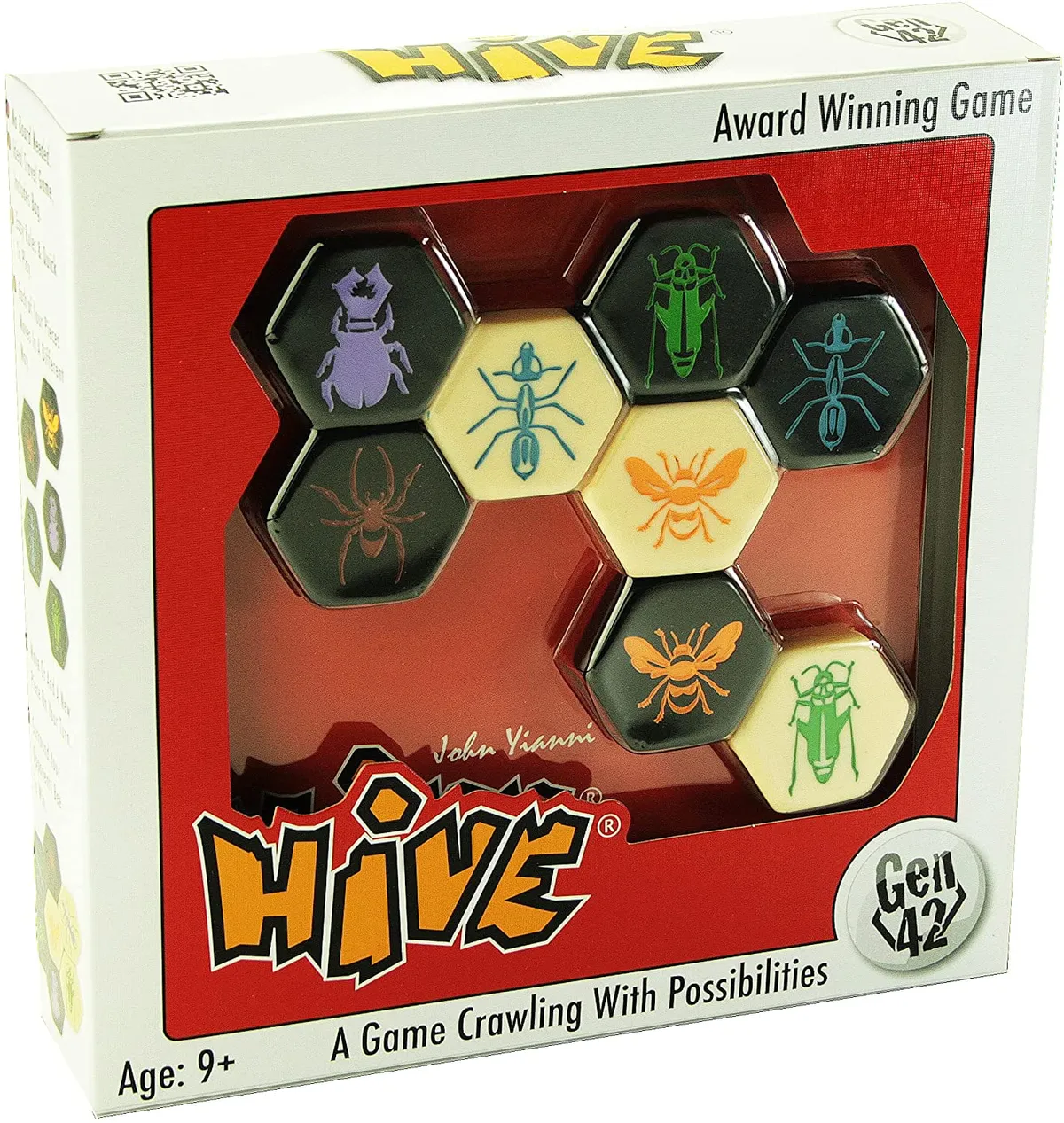
- By John Yianni. Gen42 Games.
- Age 9+, 2 players, 45-75 minutes playing time.
Hive is a surprisingly addictive abstract board game, where each player gets 11 hexagonal tiles to place and move around. Each tile is engraved with an animal motif – x1 yellow queen bee, x2 green grasshoppers, x2 purple beetles, x2 brown spiders and x3 blue ants.
To many, it’s a bit like chess – albeit with no chessboard. There are black and white tiles (well, black and cream), the different characters can move in different ways, and the aim is to capture a specific piece. In Hive, to win the game, you must surround your opponent’s queen bee on all six sides. This can be a mixture of your own tiles and your opponent’s tiles.
It’s a neat little game that requires no set up of a board – the game starts as soon as the first tile is placed down – which is quite handy as you do end up going off in various directions.
I’ve found that it’s a pretty good game to play with friends who aren’t board gamers, and they tend to pick up the rules quite quickly. It says suitable for ages 9+, but I wonder if it could be played with slightly younger children too. They may not pick up on the strategy side of things so quickly, but I think some might still enjoy playing it.
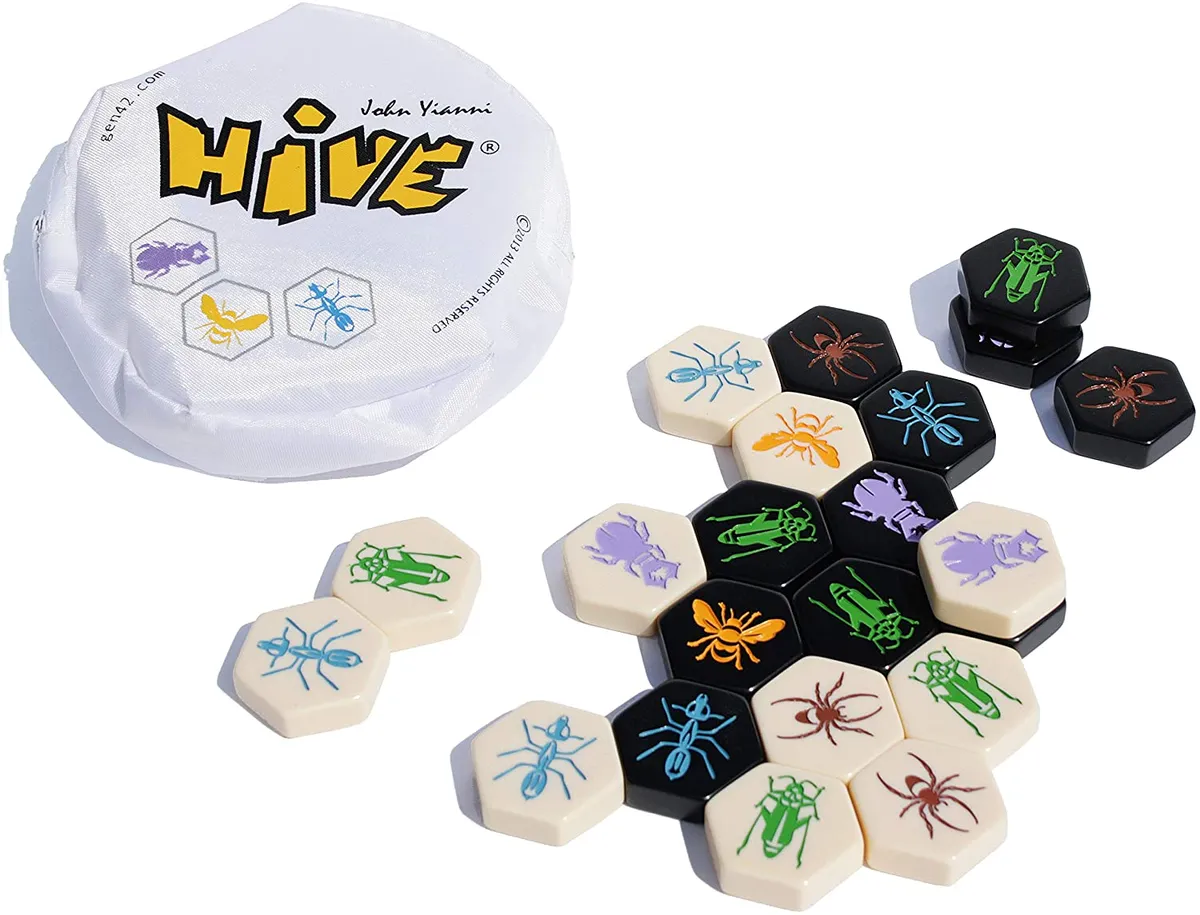
I do love these tiles, they’ve got a good weight to them and are satisfying to hold and use. They are made of Bakelite (a type of plastic) and so far I’ve not managed to damage them. Plus, as there’s no board or other components, you don’t have to worry too much about keeping the pieces safe from the elements. You can play them whilst camping, or at the beach.
How do Hive tiles move?
Each of the five animal Hive tiles has a specific movement ability that it can do, which matches up quite well to the species’ movements in real life:
- The queen bee can only move one space at a time.
- The beetle can also only move one space at a time – but it can crawl up on top of the hive as well (the tile below it is hidden and cannot move).
- The grasshopper can jump over the hive to the next vacant space ahead of it.
- The spider moves three spaces at a time.
- The ant can move anywhere around the outside of the hive.
As well as the movement rules for each type of animal tile, there are a number of other rules in place:
- When placing down a tile for the first time (except your very first tile), it must touch a tile of your colour and must not touch a tile belonging to your opponent.
- You must place the queen bee tile down within your first four turns.
- Tiles cannot be moved until the queen bee is in play.
- The larger hive (including tiles of both colours) can never be split into two (or more) parts, this is the ‘One Hive Rule’.
- Tiles (with the exception of certain animals) can only be moved if they can slide out of position without moving any other tiles to do so.
This combination of rules means that there can be a lot of to-ing and fro-ing as the game progresses, as you must think about both defence (how to block your queen bee from being surrounded) and offence (aiming to surround your opponent’s queen bee).
The game comes with a travel bag, meaning that you don't need to lug the board game box around with you – ideal if you want to take it camping or the like.
More on insects and invertebrates:
Are there any expansions and alternative versions of Hive?
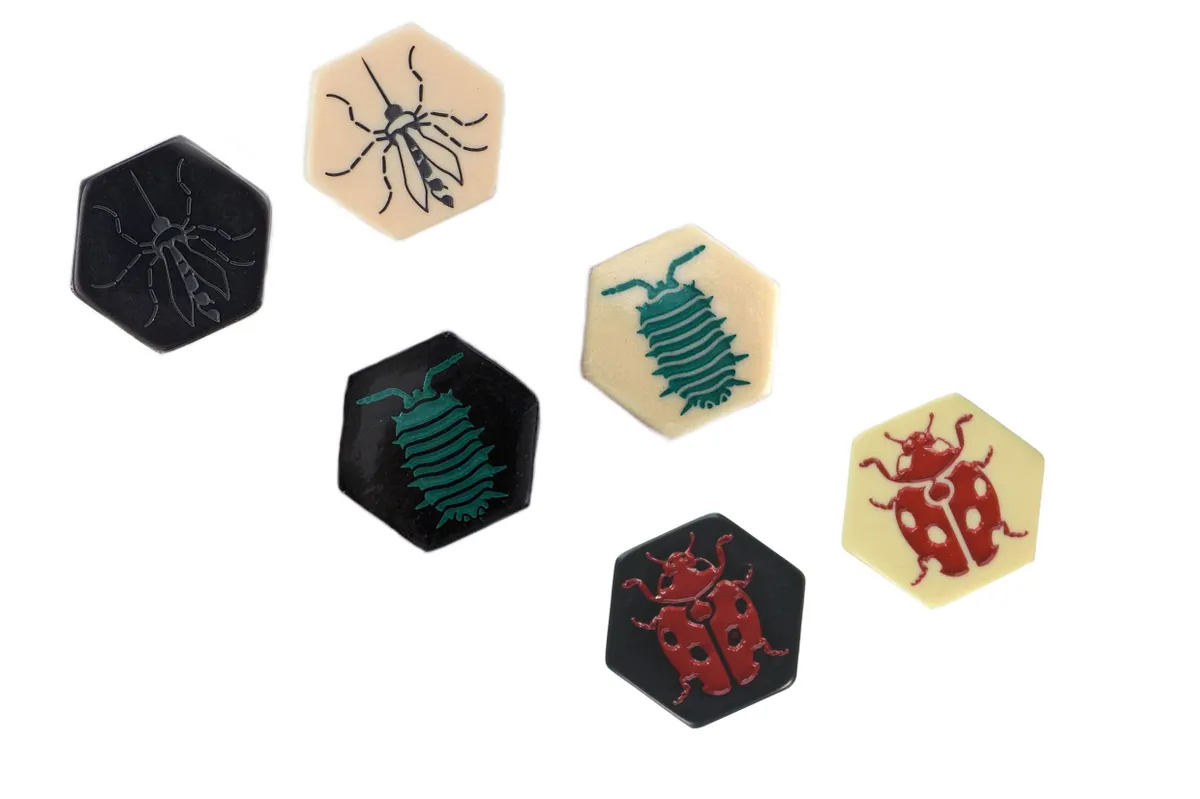
So far, there have been three Hive expansions introduced via additional tile pieces: ladybug, mosquito and pillbug. Like the original pieces, these three pieces each have unique movement abilities:
- The mosquito tile adapts its movement abilities throughout the game by mimicking the movement ability of a tile that it is touching at the start of your turn (either belonging to you or an opponent). For example, if it is touching a bee it can move by one space. If it mimics a beetle, it remains as a beetle until it moves down off of the hive.
- The pillbug tile’s basic movement ability is like the queen – it can move one space at a time. However, it also has an ability that it can use instead of moving where it can pick up an adjacent tile (either belonging to you or an opponent), move it up on top of itself and then put it down in an adjacent vacant space.
- The ladybug tile crawls up on top of the hive and moves three spaces in total. It moves exactly two spaces on top of the hive before using its third move to climb down off the hive into a vacant space (it cannot end its turn on top of the hive).
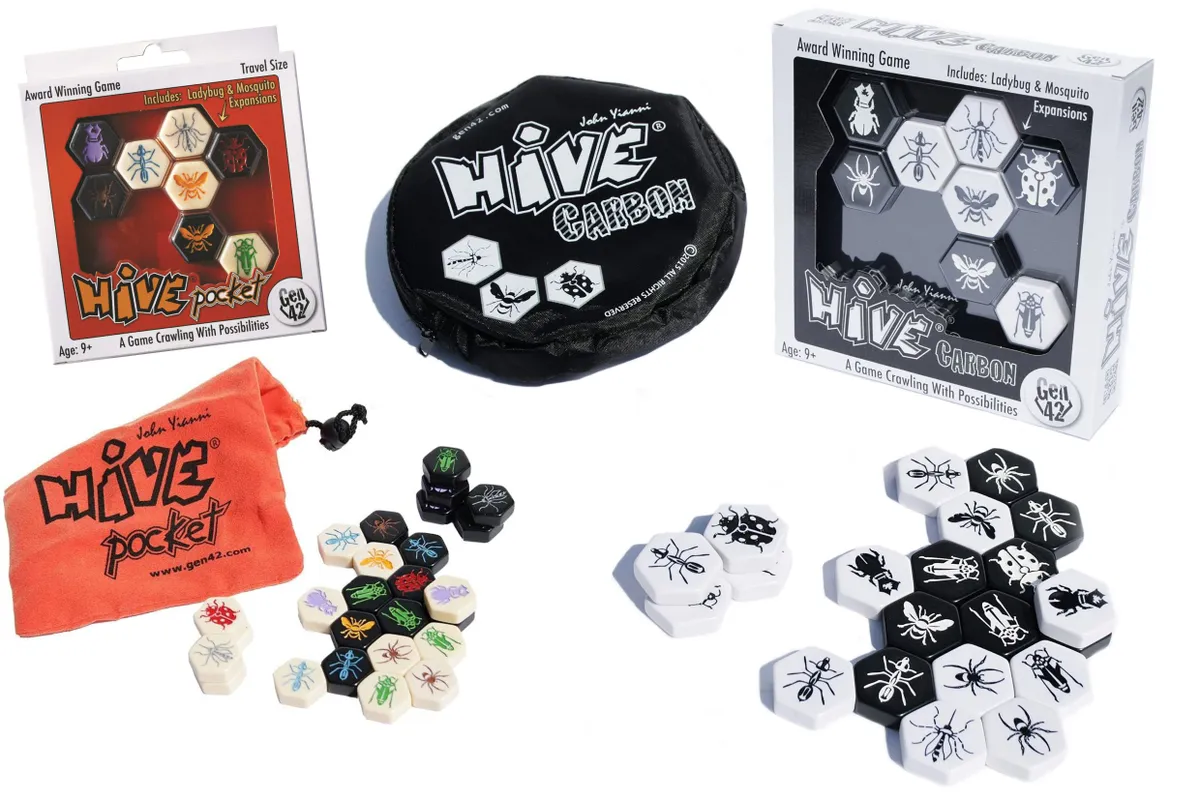
Two other versions of the game are available, including the completely black and white special edition Hive Carbon (£24.95) and the smaller version Hive Pocket (£16.95), both of which include the ladybug and mosquito expansions (and the pillbug is available to buy for both versions as well). Images above are not to scale.
I’ve not tried out the pocket version, so can’t comment on how easy it is to use the smaller pieces, but I don’t find the normal version too big or awkward to play with, even with the three expansions. However, if I’m looking for a very lightweight game to take hiking and camping, then I’d consider getting this.
You may also like
Bee mug

This pretty buzzing bee mug seems like the perfect accompaniment with Hive, it’s almost as if Sophie Allport and the game designer John Yianni discussed it! Would it be too much to drink from a queen bee mug whilst protecting your queen bee and attacking your opponent’s? Perhaps, but I do love the combo immensely.
It holds 500ml – an excellent amount of tea or coffee for concentrating on either a long game of Hive, or a number of smaller ones (depending on the skills of your opponent!). It’s stoneware, with a contrasting blue rim and suitable for use in both the dishwasher and microwave.
Sophie Allport also has a matching mini stoneware jug (£14.50) and nibbles bowl (£12.00), should you wish to take the bee theme further!
There are a number of other bee-themed mugs by Sophie Allport, but none of them match up as well with the design of Hive’s queen bee!
A Comprehensive Guide to Insects of Britain and Ireland, by Paul D. Brock
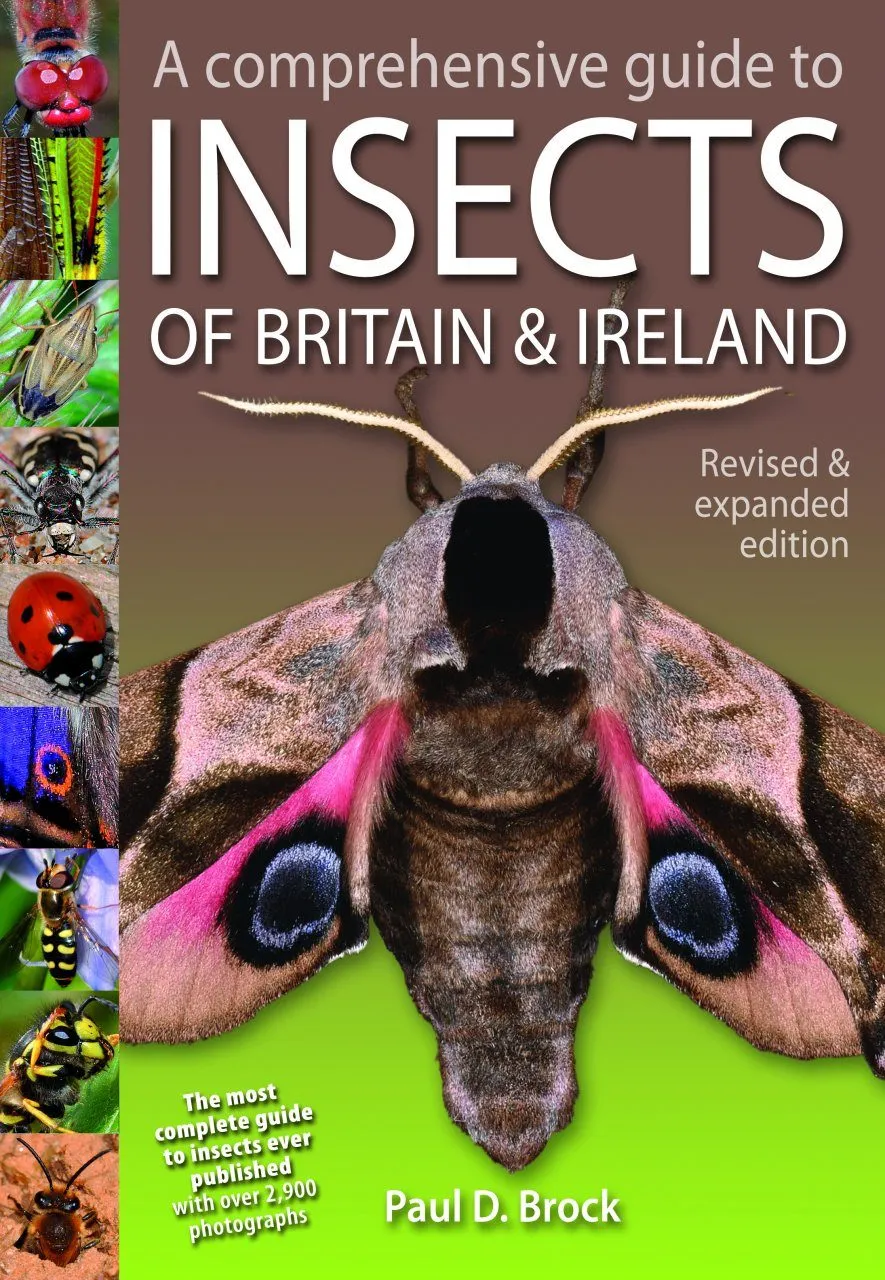
Fancy practicing and improving your insect identification skills? One of the best books on the market is A Comprehensive Guide to Insects of Britain and Ireland by Paul D. Brock. Make sure you look out for the eyed hawk-moth on the cover, as that’s the second edition of the book (published in 2019). The first edition was published in 2014.
The second edition expands on the first one, and it really does stand up to the title of being comprehensive! It is the most complete guide available, with 544 pages, over 2,300 species and over 2,900 colour photographs.
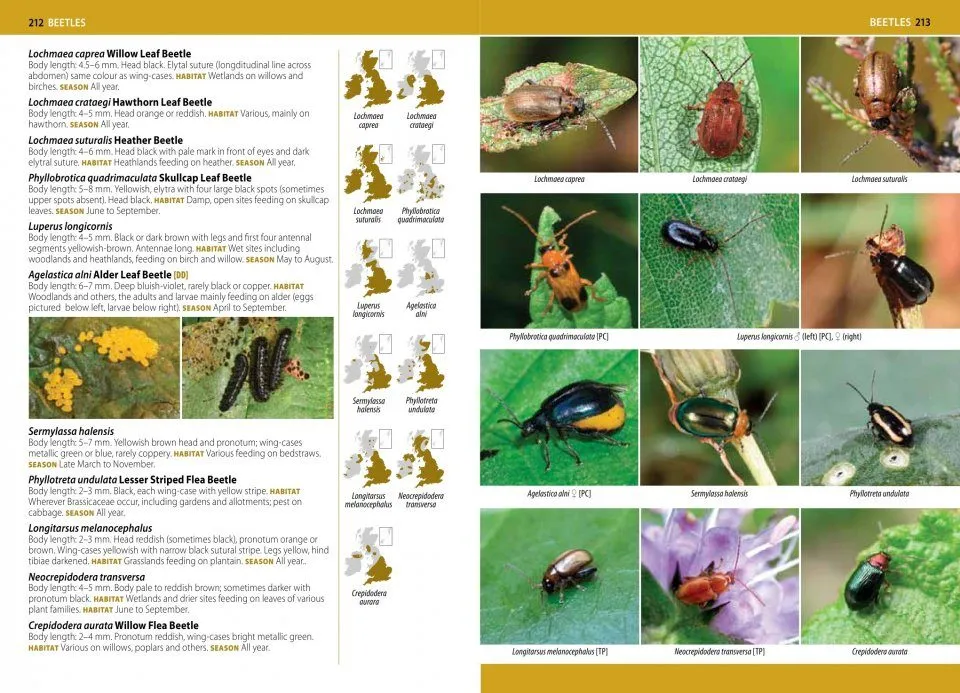
Each species comes with a updated maps of their distribution (or notes in the text if more appropriate), and where suitable, photos of both male and females are provided. In some cases, there are even photos of eggs and larvae.
The text is concise yet also manages to convey identification features, behaviours and conservation status. Where there are a lot of very similar species that need microscopic work for identification, one is given as an example and the others referenced.
Of course, if you wanted more detailed information on certain groups, you’ll need to buy specific guides, but this provides an excellent round-up to the insects of Britain and Ireland.
